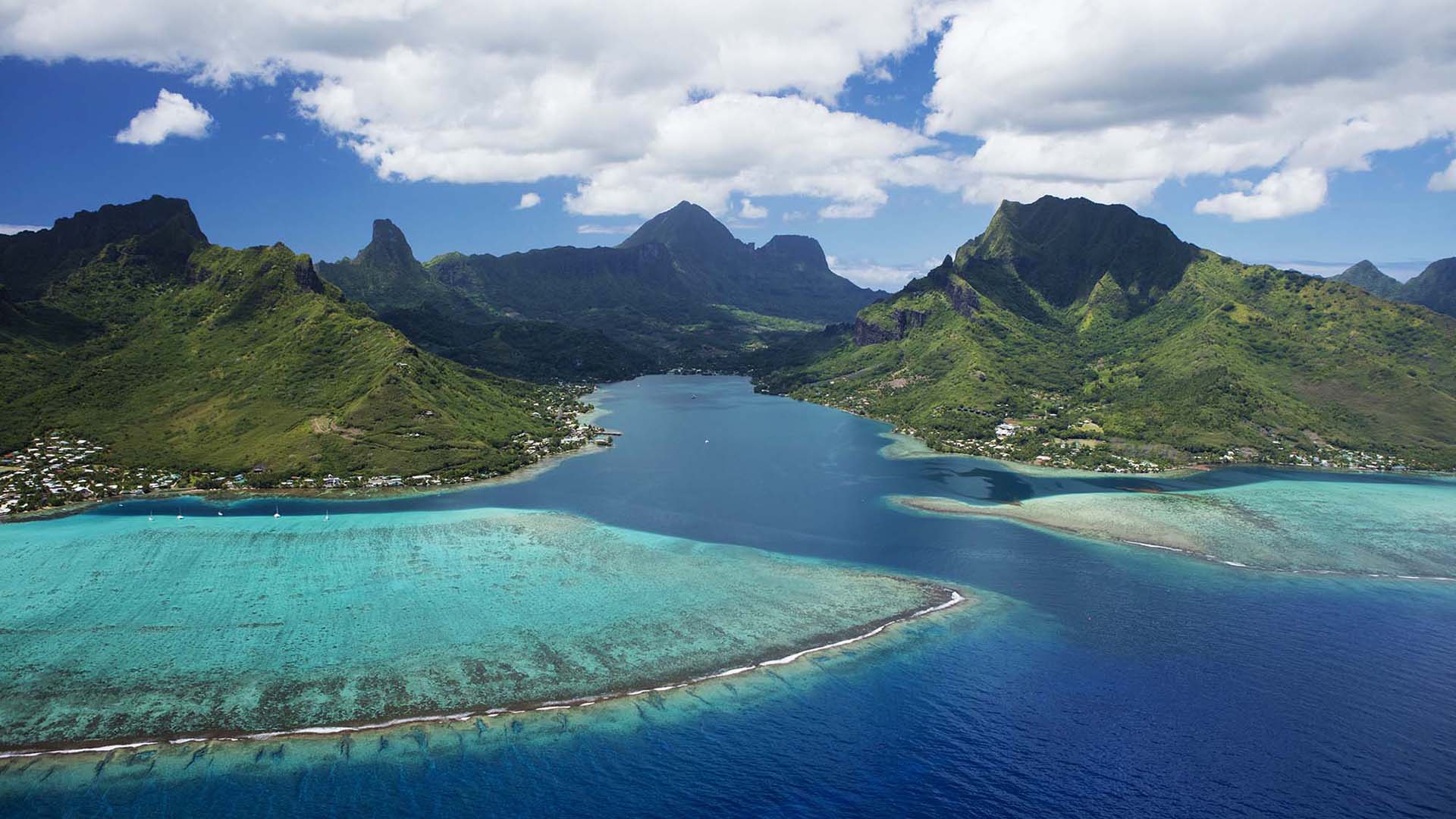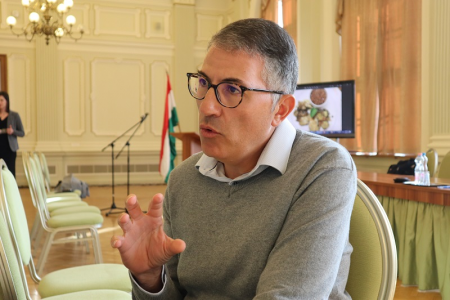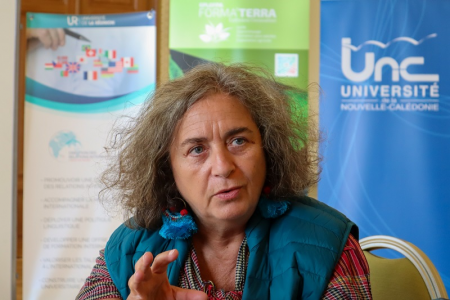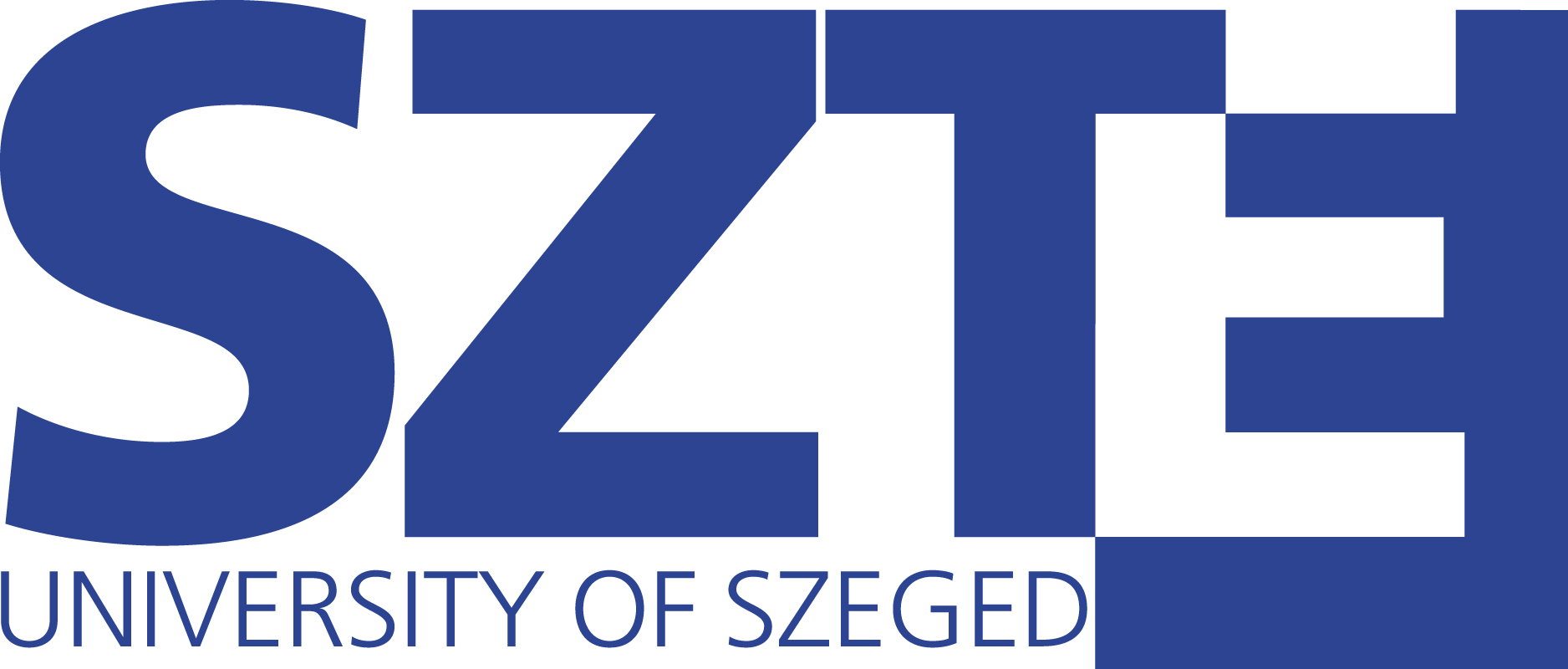
Are the development challenges of a tropical island similar to our own? Can the educational institutions of Réunion in the Indian Ocean or French Polynesia in the Pacific share research goals with the University of Szeged? This is what we discussed with French experts who recently visited Szeged for the French Overseas Territories Information Day at the University of Szeged. Abdallah Baha, managing director of the Forma'Terra training centre in Réunion, and Marianne Le Tiec, international relations coordinator at the Lycée Agricole d'Opunohu on the island of Moorea in Polynesia, answered our questions.
The island of Réunion in the Indian Ocean is the size of a small county in Hungary, but it is still divided into 200 different microclimates, which in turn divides the island's agricultural activity. It is estimated that the population will grow from the current 860,000 to 1 million in 10 years, while imports of food, crops, livestock and seeds are severely restricted in order to preserve biodiversity. Reunion must therefore achieve both viable, diversified agriculture and food sovereignty while preserving the island's biodiversity.

Abdallah Baha, Managing Director of the Forma'Terra (EPLEFPA) training centre on the island of Réunion, at the event. Photo by Szilvia Molnár / szegedify.com
According to Abdallah Baha, Managing Director of the Forma'Terra training centre, the higher agricultural technical institutes of Réunion can be an excellent professional partner for Hungarian counterparts looking for a specific partner through student and teacher mobility, particularly in the fields of hot belt agriculture, food processing, rural development and rural tourism. The training centre in Saint-Paul has three institutions: an agricultural high school (BTS), a training centre for apprentices (CFA) and a vocational training centre for adults (CFPPA), complemented by a farm specialising in crop production. Abdallah Baha said that after technical training, it would be very important for students to continue with higher education studies in Réunion, as there were not enough agricultural engineers on the island compared to the complexity of the challenge.
Development instead of night pollinator brigades
The 18 hectare farm, which is also used for adult education, is mainly used for fruit, vegetable and sugar cane production. Among the fruits are unusual crops such as mangoes and pitaya. The latter, also known as dragon fruit or coconut cactus, was not originally native to the island, but was introduced by Forma'Terra and an experimental project of the local hot-belt agricultural research institute. One of the obstacles to its naturalisation was the fact that the pitaya is pollinated by a bat species that does not live on Reunion Island. For this reason, the flowers had to be pollinated by hand in the initial stages of the project, and since the pitaya flowers at night, initially a night pollination brigade had to be organised on the farm. No wonder that one of the project's goals was to create a self-pollinating pitaya hybrid.
Another experimental project of the Forma'Terra training centre is about agricultural production in urban environments: how to integrate non-conventional agricultural land such as front gardens and even the roofs of residential buildings into food production.
Given the island's high biodiversity and their desire to preserve it, they need to find local resources for the production of plant and animal products, especially quality seeds. According to the expert from Reunion, these are areas of research where even students could have a lot of opportunities. From Szeged, the Faculty of Agriculture of the University of Szeged is currently interested in a cooperation on climate warming, resilience of agricultural systems and biodiversity conservation.
Agro tourism alongside agriculture
After being asked what research topics he would recommend Réunion as an Erasmus destination for, Abdallah Baha said:
- Hungarian agriculture has a European continental character; there are no large-scale maize or soya crops in Réunion, but it is in both our interests to know the optimal local agricultural production potential and to have quality products. On our island, about 45% of our produce is local, virtually all vegetables and fruit are produced locally, as are eggs and poultry, and imports are mainly milk, beef and pork. The development of agriculture in Réunion is based on small local farms, whose products are labelled "Bienvenue à la Ferme". As these are family farms, we are trying to develop complementary activities to agricultural production, such as tourism. The same families who produce food are also involved in coastal tourism services. This has worked well for years, with people returning and locals benefiting from families on holiday. The county has a specific plan to develop secondary activities in rural areas, green tourism and agro-tourism. This will slowly become a purchasing power generator, as tourists seek local produce and islanders want to eat local; it is hoped that this plan will also make farming more sustainable for farm dwellers.
The people of Réunion are binded together by Creole culture, lifestyle and gastronomy. The island is multicultural and Creole is a language that has come to be from a mixture of African, Arabic, Indian and European languages, and has evolved from its original mediating linguistic character into a mother tongue. According to Abdallah Baha, the Creole identity is fully open, able to integrate newcomers to the island.
- Their common gastronomic dish is rougail de saucissons, a chutney-like sauce made with fresh tomatoes, onions, garlic, ginger, chilli and other spices, which is eaten with rice, meat, fish and vegetables. The end of the year is usually a special time on the island, when mangoes and lychees ripen and the flamboyant, or fire-flower tree (Delonix regia) blooms. Families often and happily picnic on Sundays, bringing out their cauldrons and cook on an open fire, a custom that has been passed down from generation to generation, despite the presence of fast food and chain stores on the island just as elsewhere," said the managing director of the St. Paul training centre.
Training of professional farmers
Even further than Réunion is French Polynesia, France's overseas territory in the Pacific, with 130 islands scattered across the ocean in a Europe-sized area. The most famous of these is Tahiti, part of the Society Islands, and its capital, Papeete, is home to the University of the Archipelago. Within sight of Tahiti lies the paradise island of Moorea, from where Marianne Le Tiec, an English teacher and Erasmus Officer at the local Lycée Agricole d'Opunohu (EPLEFPA) came for the French Overseas Territories Information Day at the University of Szeged.

Marianne Le Tiec, English teacher and Erasmus Officer at the Lycée Agricole d'Opunohu in Moorea, at the event. Photo by Szilvia Molnár / szegedify.com
The Lycée Agricole d'Opunohu is an agricultural vocational high school and higher technical school on the island of Moorea, which signed an Erasmus bilateral agreement with the University of Szeged in 2020. Students from Moorea will come to Hungary for a 2-month internship, mainly in the field of agriculture. Like Réunion, French Polynesia aims to achieve food security based on its own resources and reduce its dependence on imports. To this end, they are looking for ways to train a professional farming class in the European sense.
When asked what Erasmus research topic she would recommend in Moorea, Marianne Le Tiec said:
- In Polynesia, the challenge of food sovereignty is being addressed primarily. We import too many food products, such as beef from New Zealand and South America and dried fruit from the United States. I think it would be interesting for researchers from Europe to study a geographical area that has a very specific location that wants to preserve its biodiversity, but at the same time needs to develop its agriculture. We should try to diversify the food produced by taking advantage of local production. This could be a good case study to link French Polynesia with Hungarian agricultural training. We could look at issues of terroir, i.e. the place of production, variety and technology, and the problems of biodiversity conservation, and this could also include the study of microclimate. In short, we can provide a more general, global vision of the challenges facing agriculture.
Divine tiaré, human environmental management
Tourism is an important source of income in the Polynesian islands as well. However, unlike Réunion, Tahiti, Moorea or Bora Bora are not a destination for family holidaymakers, but for wealthy Americans. Luxury tourism is so much a feature of the islands' services that local ornamental horticulturists grow flowers primarily for the luxury catering trade. Marianne Le Tiec says it is not easy to find a balance between tourism and environmental protection:
- Efforts are also being made to develop ecotourism, as water and waste management problems are real; for example, waste is currently untreated on the island of Moorea. Tourism generates a lot of money, but also a lot of waste. The tablecloth has to be immaculately white, because a rich American is not going to use recycled materials, especially in a five-star hotel. A luxury hotel in Polynesia costs 1200 euros a night, and well, serving that demand is not very environmentally friendly.
But growing flowers is not just for Americans: the native gardenia, the tiaré (Gardenia taitensis), is also part of the traditional costume of the inhabitants of the Polynesian islands. So beautiful and fragrant is this flower that a Tahitian legend claims it is of divine origin: it was created by Atea, the oceanic god of creation, and Tane, the god of beauty. In the Polynesian islands, the tiara is made into a garland for guests to hang around their necks, and Maori ladies wear it in a crown or pinned behind their ears in their hair. In some Pacific Island traditions, the wearing of the flower also indicates a woman's marital status: a flower worn on the left ear means she is married, and on the right ear means she is a maiden. Men, on the other hand, wear only unopened tiaras.
But growing flowers is not just for Americans: the native gardenia, the tiaré (Gardenia taitensis), is also part of the traditional costume of the inhabitants of the Polynesian islands. So beautiful and fragrant is this flower that a Tahitian legend claims it is of divine origin: it was created by Atea, the oceanic god of creation, and Tane, the god of beauty. In the Polynesian islands, the tiara is made into a garland for guests to hang around their necks, and Maori ladies wear it in a crown or pinned behind their ears in their hair. In some Pacific Island traditions, the wearing of the flower also indicates a woman's marital status: a flower worn on the left ear means she is married, and on the right ear means she is a maiden. Men, on the other hand, wear only unopened tiaras.
We asked Marianne Le Tiec about her opinion on the differences between Indian Ocean culture and Polynesian culture:
- "I've lived on both islands," she said, "I would say there was less cultural mixing in French Polynesia than in Réunion. The island in the Indian Ocean has had successive waves of Indians, Chinese, Africans and Europeans coming to it throughout history, whereas Polynesia has had none. In Tahiti, New Zealand, Hawaii or Easter Island, we find the same Maori culture, although the differences are greater on the more remote islands. They are a bit like the peoples of continental Europe in this respect. This makes it all the more important for Polynesians to establish European links to increase their sense of belonging. In Reunion, families always have someone working somewhere in a big city; this is not the case in the Polynesian islands. Here, people look for work in the Pacific zone, not in France.
As far as language is concerned, French is the official language and language of instruction in French Polynesia, but it has not really taken over the role of the local language. "There is a common autochthonous Polynesian language, Reo Tahiti, spoken in the Society Islands," says Marianne Le Tiec. "In the wider archipelago, in the Marquesas or the Gambier Islands, we find related languages. These languages are different, but they also share a common vocabulary that allows people to understand each other. French is only a second language, in fact a foreign language in Polynesia, and many families do not even speak French. For this reason, it is quite a complex task when you have a student like this, you always need a colleague to translate so that there is no misunderstanding in the training. In our institution, we also run a Reo Tahiti language course, mainly for young people from more distant islands.
For more information on Erasmus+ opportunities, please contact the Faculty of Agriculture or the SZTE NKI International Mobility Office, depending on the field of study.
Useful addresses of partners (communication in English or French):
Lycée Agricole d'Opunohu: erasmus.opunohu[at]gmail
Lycée Forma'Terra: erasmustpaul[at]gmail.com
Sándor Panek
Cover photo: aerial view of the island of Moorea off Tahiti. Photo: tahiti.com

